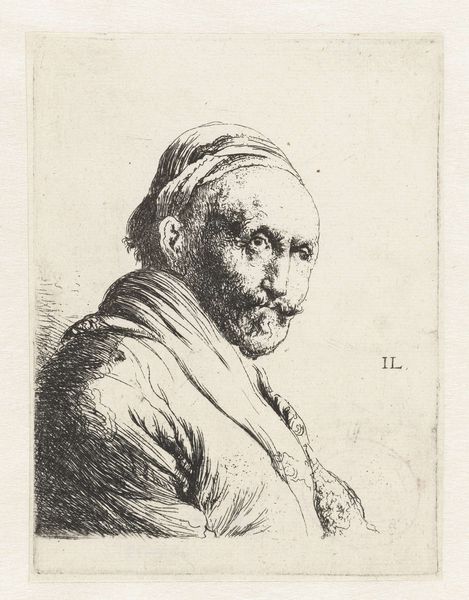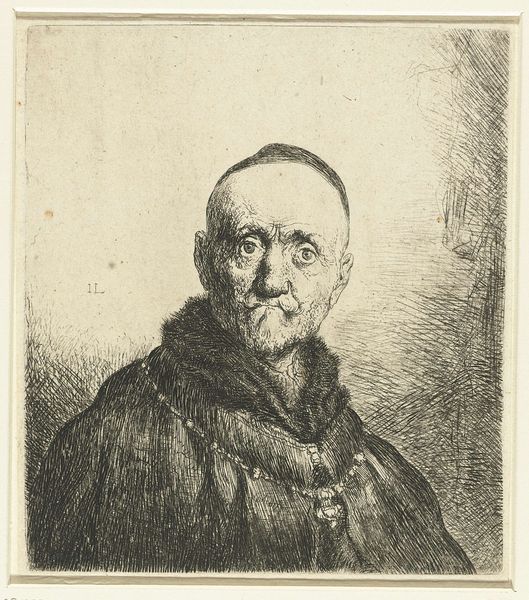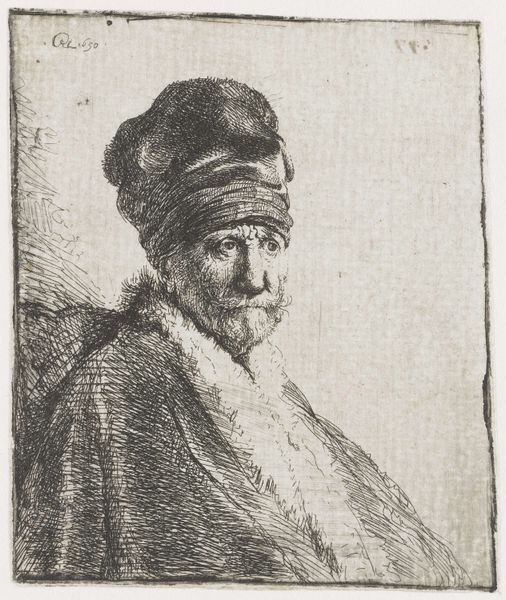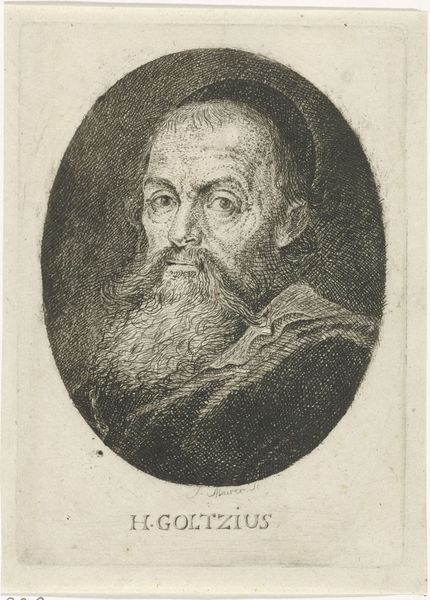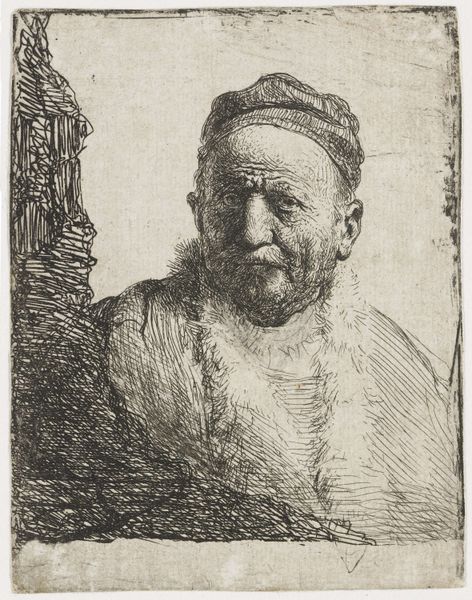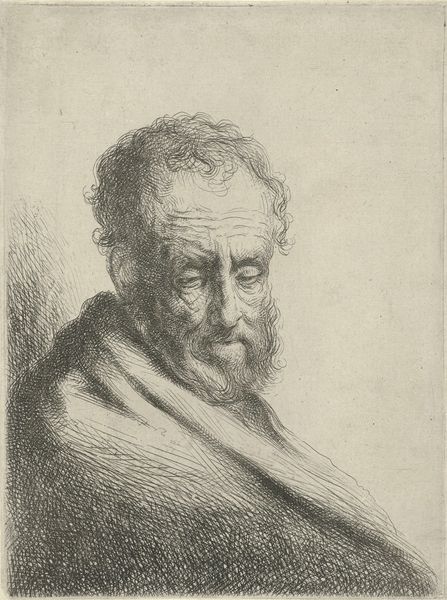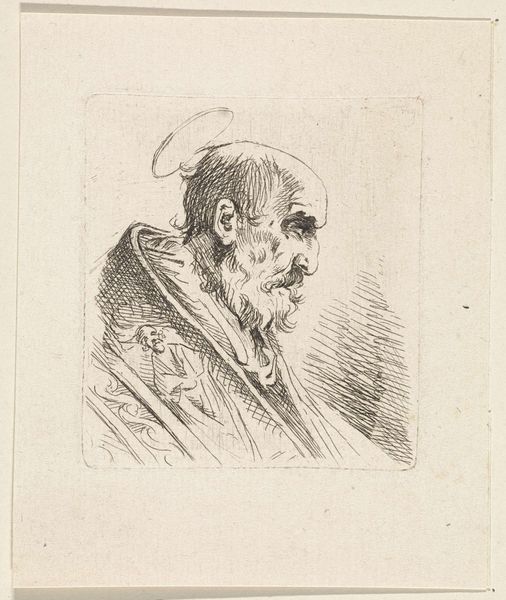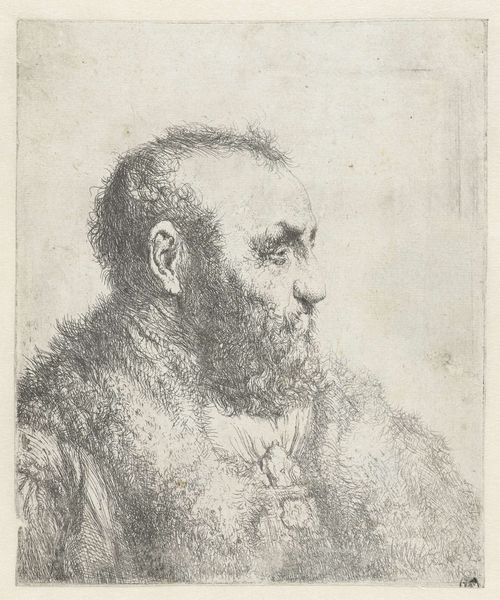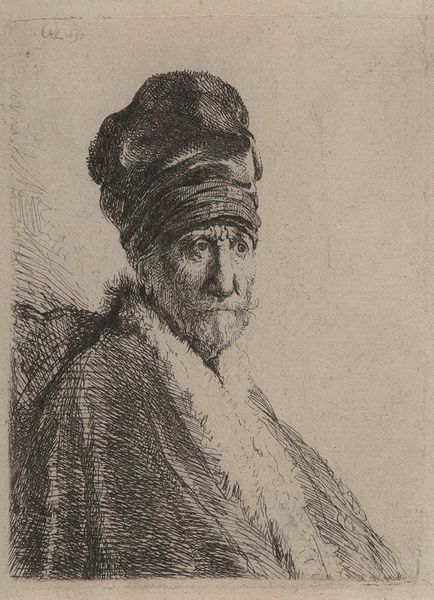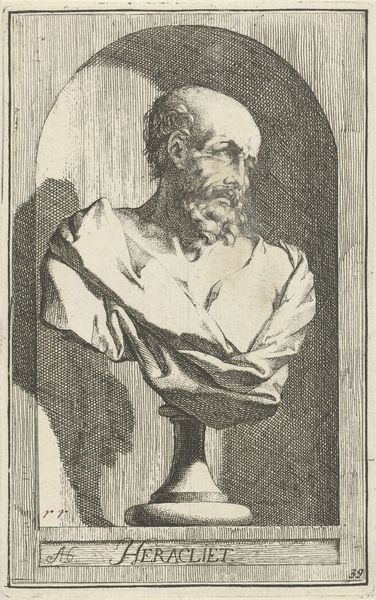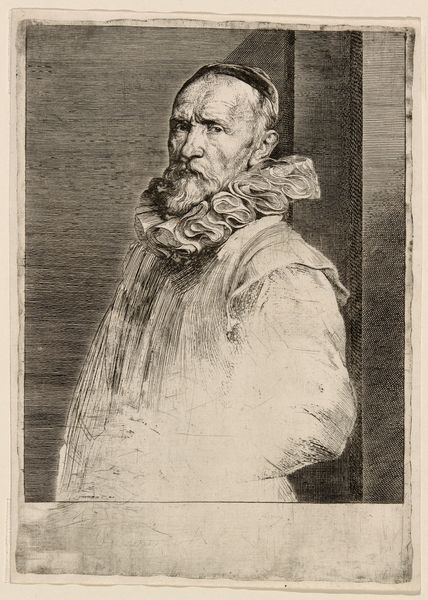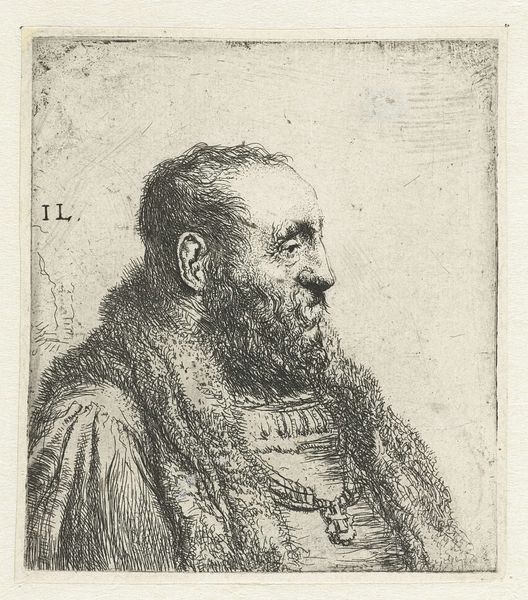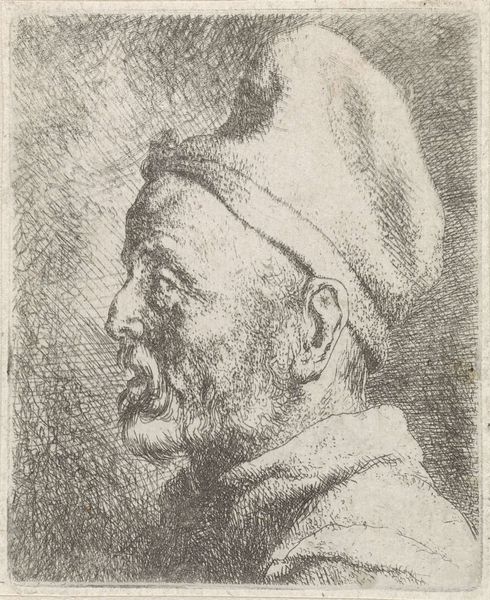
print, etching
#
portrait
#
baroque
# print
#
etching
#
figuration
#
line
#
realism
Dimensions: height 95 mm, width 83 mm
Copyright: Rijks Museum: Open Domain
Editor: Here we have "Borstbeeld van een oude man," or "Bust of an Old Man," an etching from Jan Lievens, sometime between 1625 and 1674. The intense detail achieved through etching gives him such presence! What can you tell us about this striking portrait? Curator: This print exemplifies the interest in individual character during the Baroque period. Notice how Lievens uses etching lines to meticulously capture the texture of the man's skin, his weathered face speaking volumes. Prints like these circulated widely, influencing public perception and contributing to the development of the "Old Master" cult that celebrated artists who could convincingly render the human form with realism and emotional depth. Do you notice anything that reminds you of the influence of Rembrandt here? Editor: Absolutely! There’s a similarity in the intense study of the face. Does the "IL" in the corner connect somehow with social or economic status, like the right to depict someone of stature? Curator: The initials, 'IL', are the artist’s signature, it establishes authenticity in a growing print market and signals Lievens’ own artistic authority. These prints democratized art somewhat, making images accessible to a broader public than painted portraits. Editor: So, prints could challenge established hierarchies by giving more people access to images and ideas? Curator: Precisely! Consider how powerful that was, and how prints served as visual arguments in religious and political debates of the time. How do you see this print functioning within that landscape? Editor: I hadn't thought of it like that before, but I see it now, that portrait etchings contributed to the democratization of art and the public sphere during a tumultuous era. Thanks! Curator: It's about more than just the individual in the portrait, isn’t it? We start to see that the image’s true power lies in its social context and its power to connect art with a growing public audience.
Comments
No comments
Be the first to comment and join the conversation on the ultimate creative platform.
